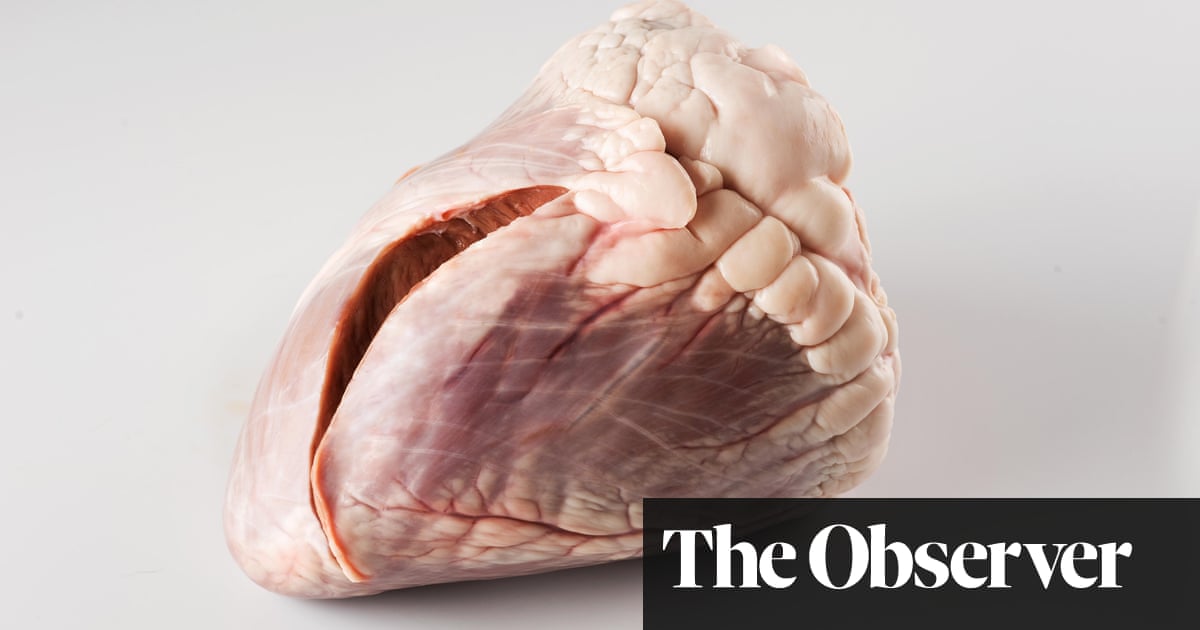
Calf’s brain, veal’s head, ox tongue. It may sound like a menu from France or the 1970s, but these are the key ingredients behind star dishes at hit London restaurant openings over the past year, including Bouchon Racine, a Lyon-inspired venue in Farringdon, and Speedboat Bar, a Soho spot paying homage to Bangkok’s Chinatown.
The fifth quarter – the term Roman butchers used for offal – is making a comeback, as diners become more adventurous, health conscious, environmentally concerned and budget-aware.
At Higher Ground in Manchester, whole carcasses are butchered, with pig’s head, tongue and cheeks turned into terrine and liver and kidney enriching ragus. At London’s Quality Chop House, a recent sweetbread dish “flew out” of the kitchen, says head chef Nathan Chapman. “We always try to have at least one offal item on the menu and to educate people on how delicious it is.”
Shoppers are also turning to what used to be seen as cheap offcuts for their home-cooked dishes. Ocado has reported an 18% increase in offal sales over the past year, with bone marrow purchases jumping 37.4% and tongue by 103%. Sainsbury’s has similarly seen a 20% rise in chicken liver sales this year.
Offal features extensively at Bench in Sheffield. The restaurant celebrated its third anniversary last weekend with offal burgers, while last week, lamb’s heart koftas were on the menu. Inspired by his Sicilian roots (offal remains widely eaten across Italy), owner Ronnie Aronica has never shied away from organ meat. “It can compete against what would be considered prime cuts,” he says. Ox heart is regularly served “as a steak, almost”, pink on the inside, alongside a garnish.
Offal has always had its champions – chef Fergus Henderson pioneered nose-to-tail eating at St John restaurant in London’s Smithfield in the 1990s. And turning to offal in tough times is nothing new. After the 2008 financial crisis, offal sales in France jumped by 15%. In 2022, as the cost of living crisis began to bite, Waitrose reported a rise of 12.6% and 21.7% for sales of sheep and ox kidneys respectively.
HG Walter, a renowned butcher supplying restaurants and the general public, says tongue sales have grown by 40% to 50% in each of the past three years. Yet the long-term trend is down. A 2016 National Food Survey found weekly liver consumption in the UK had dropped from 50g a person to just 5g in 2014.
Nevertheless, chefs are increasingly confident serving unheralded cuts. Not only are tongue sales up at Waitrose, but more restaurants are using the fatty, tender delicacy.
At Nessa in central London, it is pressed and served with green salsa. Down the road, Akoko applies a west African suya marinade. In Lancashire, the Parkers Arms serves it with a garlic and parsley sauce.
At Speedboat Bar, beef tongue and tendon curry is a signature dish. “Tendon’s the crucial bit; it makes the sauce velvety, sweet and sticky – it gives a nice sheen to it,” says founder Luke Farrell of the Thai-Chinese inspired dish. “Offal’s a massive thing in Thailand and sometimes textures are more important than flavour.”
The tongue becomes soft and yielding, he adds, and has “a different texture to steak – it falls apart more in a curry like that, which is rather nice”.
Also, when it is presented in a curry, says Farrell: “You get a lot more takers.” And while some of his customers are squeamish about offal, it can easily be avoided. “We recommend chicken skins instead,” says Farrell, who hopes to soon add a pig’s brain tom yum soup.
Offal can help with bottom lines too. “Buying steaks isn’t economic – offal can be a tenth of the price,” says Aronica, who pays £3.25 a kilogram for heart, compared with £18 a kg for sirloin. Ribeye steak at Ocado is £25 a kg, while lamb’s liver costs £6 a kg. At Waitrose, lamb’s kidneys cost £7.78 a kg, against diced lamb shoulder retailing at £29.81 a kg.
For many butchers, however, a short-term spike does not mitigate a long-term downturn. According to David Lindars, technical operations director of the British Meat Processors Association, the majority of British offal is either exported or turned into pet food. “The days of big quantities of offal being consumed here are long gone.” says Lindars.
John Mettrick, chairman of the Q Guild, which represents quality butchers and independent meat retailers in the UK, and the owner of Mettrick’s Butchers in Glossop, Derbyshire, says fewer and fewer customers opt for offcuts. Tripe and hearts used to fly off shelves, he says, but “we found we were throwing more away than selling”. He adds: “Our main sale for lamb’s heart is for school dissection.” Lamb’s kidneys and liver are still popular, though decreasing, he says. “We’d love to sell more ox liver, pig’s liver. Offal is highly nutritious and brilliant value.”
While they vary depending on the animal and organ, there are health benefits to offal, according to Dr Linia Patel of the British Dietetic Association. Liver is packed with vitamin A and kidneys with vitamin B12. Tripe and oxtail are also rich in collagens.
Yet Aronica thinks the traditional cooking of offal in Britain has scared people off. “Back in the day, it was dredged in flour, cooked to obliteration, maybe the product wasn’t good. But if you serve liver just blushing, it’s delicious. If you understand how to cook it properly, it’s cost-effective, delicious and something we should all be conscious of – to use everything. Offal is super-tasty – there’s nowt wrong with it.”












